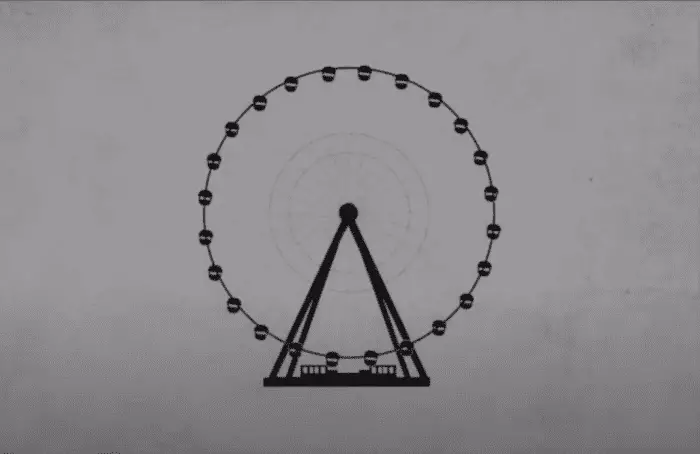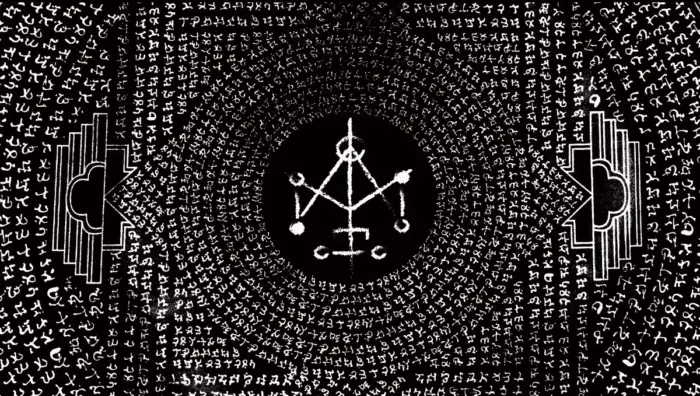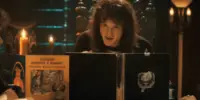Kevin Ko’s Taiwanese Horror Incantation debuted on Netflix this month to instant praise. I love when word-of-mouth leads me to a film, and that’s exactly what happened here. People on Twitter were raving about it, even describing it as “The new Noroi.” I’m happy to report that it lives up to the hype. Not only is it incredibly well put together, but the fictitious folklore and religion of the film are also thoroughly detailed, adding to the mystique. It’s a found footage masterpiece and quickly became the highest-grossing Taiwanese horror film for good reason!
A quick summary: Li Ronan (Ruo-Nan) speaks to the camera directly and explains that six years ago, she violated a religious taboo and is now cursed. Ronan, her boyfriend Dom, and his cousin Yuan ventured to a remote village that worships a deity known as the Buddha-Mother. The trio, as “Ghost Busters,” hopes to document the forbidden tunnel located there. Dom and Yuan’s great uncle lives in the village and greets the trio upon arrival. While Ronan is initially shunned and asked to leave because the rituals are only for members of the clan, they let her stay and participate. The three offer their names to the Budhha-Mother, and Ronan is instructed to offer her daughter’s as well after she is born—to her shock, as she was unaware of her pregnancy.
Things go awry and Ronan is the only survivor of the three. The film cuts between these two time periods (six years ago and now), as Ronan reunites with her daughter, nicknamed Dodo, and we learn what really happened.
Ko, who directed, produced, and co-wrote the screenplay stated the Budhha statue props were the biggest cost during production. To me, this shows how important the verisimilitude of Incantation is. Using these props and other tricks pulls us in completely, no matter how improbable, leaving the viewer wondering, “Am I cursed for watching this?”
Spoilers for the film are below!

“Did you know that your will can actually change the outcome of events?” During the opening of Incantation, Ronan presents us with an experiment: The Ferris wheel shown above will rotate in different directions, just by “willing” it to. An image of a train is then shown, either going backward or forwards. This is a common optical illusion that uses multistable perception.
You’ve probably seen the gif of a woman dancing, with the direction she moves changing from clockwise to counterclockwise depending on your view. This is based on the lack of depth and the ambiguity of the image in question. Our minds are constantly trying to make sense of it, causing the different rotations. Most people will view these illusions as moving clockwise because that is how they have learned to perceive direction. It’s fascinating stuff!
Ronan then explains, “This is how blessings work.” Your will changes the outcome of events, or, another way of putting it, the way you react to the world influences how it in return reacts to you. Cause and effect. It’s all a part of the complicated mess known as human nature. She instructs us to memorize the symbol of the Budhha-Mother (a series of lines and circles) and the chant. It appears throughout the film, both in obvious and hidden ways.
Clearly traumatized by whatever happened, Ronan has been in a psychiatric hospital at least once that we know of since the village incident. Her daughter was taken by the state and placed into foster care. Their reunion plays a huge part in the story and offers a setup for “why are they filming this?” Ronan describes it as a “New Life Diary” that she and Dodo can look back on later.
Going back to the curse: attempts to explain it to others cause strange physical symptoms and even death. Several unfortunate and brutal clips show people violently committing suicide after speaking with Ronan. This in itself is a double-edged sword, as we’ll learn later.
Another flashback reveals Dom and Yuen heard what sounds like a child crying and kick open a sealed tunnel to find them. This is the forbidden tunnel they came to the village to investigate. Ronan waits outside and begins bleeding profusely from her uterus, possibly indicating something is happening to her unborn baby. Yuen runs out screaming and jumps to his death. Dom mysteriously perished inside the tunnel, and the villagers remove his corpse as Ronan weeps. We do not see what happened to the pair until the very end of the film.
The second method of trickery also involves optical illusions. The full prayer is recited with the following image displayed. Red text of the Mandarin and English translations flash in the center of the screen, focusing the viewer on the circle. After several minutes, it abruptly turns white.

The Budhha-Mother rune is now burned into the screen as an afterimage. Ronan has done her job: we have now memorized the symbol so much that we see it even when it’s not there. This transcends the layers separating the viewer from the story, directly involving us with the curse.
Ronan explains that the incantation dilutes the curse. Every person she shares it with lessens the burden, with her ultimate goal to save her daughter Dodo from a horrible fate. Dom and Yuen ventured to the deepest part of the tunnel and viewed the face of the Goddess directly, which accelerated their condition, and thus, they could not spread it to others, causing their deaths. Ronan does not enter the tunnel until after she explains her plan to the viewer, so her curse was not as severe.
She essentially sacrifices herself and everyone watching. Her will has changed the course of not only her life but all of ours. It’s ingenious. This reminded me of The Ring, where the only way of saving yourself is by spreading the cursed video further, copying it, and sharing it with others. Evil cannot be defeated, only watered down.
Incantation warrants repeat viewings to catch every detail. I haven’t been this impressed by a found footage flick in a while, and it has reinvigorated my love of the subgenre and its unique storytelling method.


